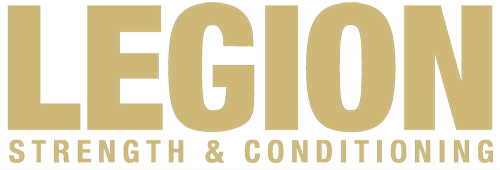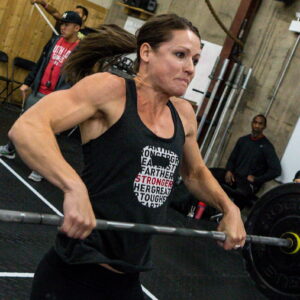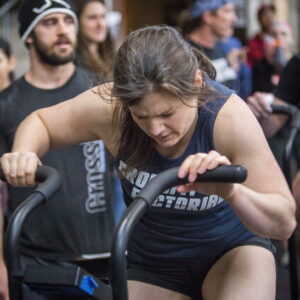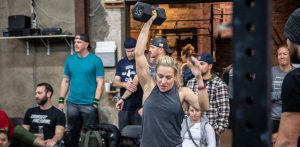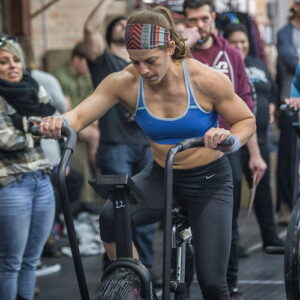The training of many elite athletes involves seemingly endless intervals suffering on the assault bike and the erg.
While there seems to be a general understanding now that the flashy 1RM PRs clogging up our Instagram feeds don’t necessarily translate into improve performance in the sport of CrossFit – what about the long hours of grunt work spent rowing, running, biking and skiing?
Are you wasting your time sweatin’ to the oldies on the assault bike? Does hard work actually pay off here?
There is certainly value in putting in work in cyclical modalities, and we use running, rowing, biking, etc. regularly in the training programs for our clients.
However, the link between improving aerobic capacity in something like a 5k row and getting better at twenty minutes of burpee box jumps and DB snatches is a bit more tenuous than one might think.
So, how should we think about integrating running and rowing into our programming?
Is it enough to do some “CrossFit metcons” and layer an interval-based endurance program on top of that?
What is the relationship between improving scores on tests of cyclical aerobic capacity (like a 2k row, 3k run or 10 min assault bike test) and improving mixed modal tests (like Open workout 18.1, 17.1, or named workouts like Kelly or Eva)?
In this conversation, Luke and Todd discuss:
- How cyclical pieces like running and rowing can be used to teach pacing and improve the ability to be sustainable for powerful athletes
- When aerobic capacity is a limiting factor for performance – and when it is not
- The difference between building an aerobic base and training with cyclical modalities to improve performance in CrossFit
Listen below – or in the podcast player of your choice.
Listen Here
- iTunes
- Overcast
- mp3
- Or stream here:
- If you’re enjoying the show, why not a leave a review? It makes a difference in terms of other people finding the show.
